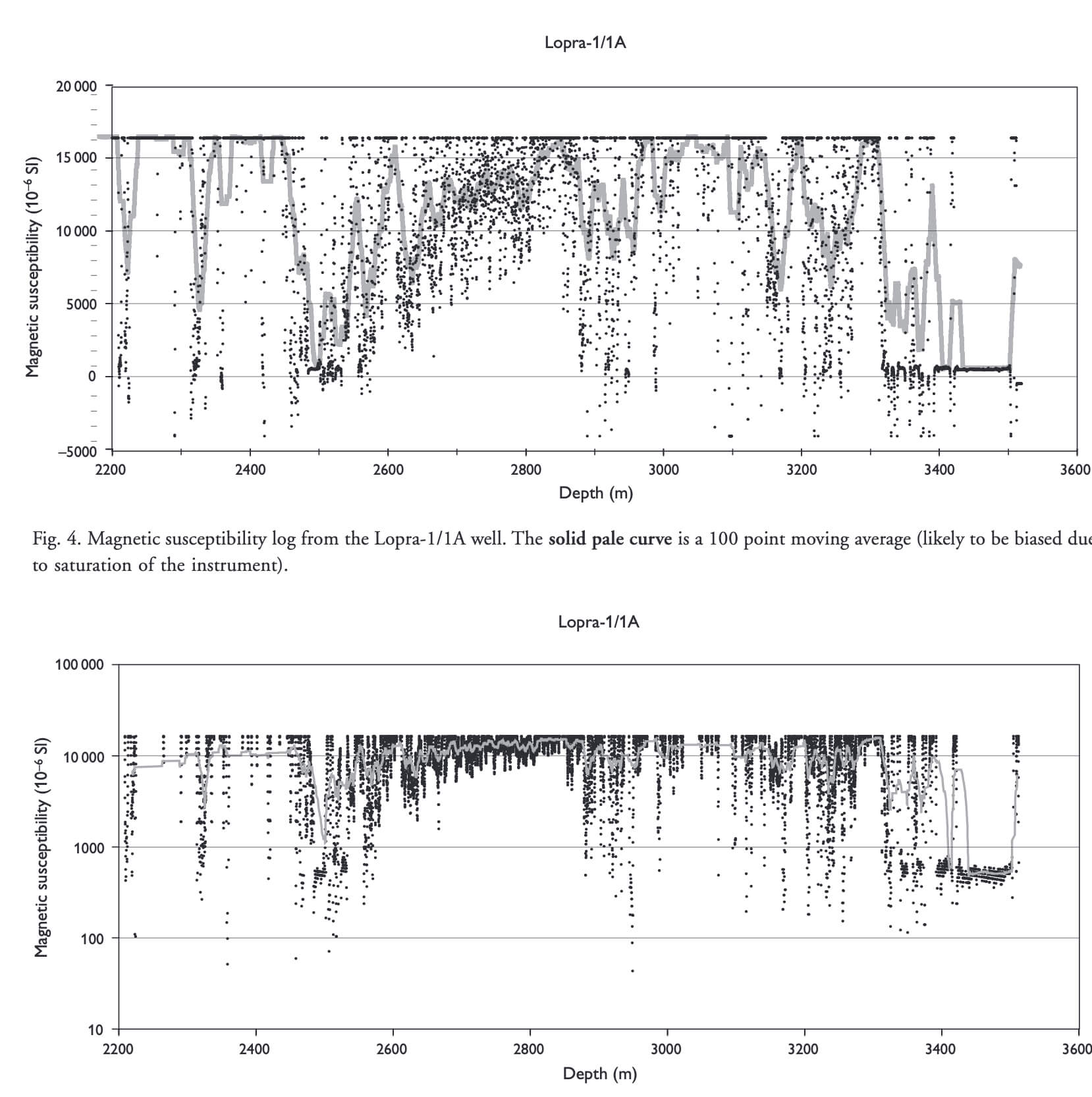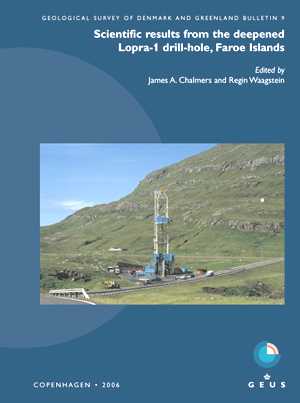
How to Cite
Share
Abstract
Susceptibility measurements from cores (representing basalt, lapilli-tuffs and tuffs) and magnetic logs from the Lopra-1/1A well are presented. The basalts fall into high- and low-susceptibility groups with no overlap. The high-susceptibility basalts (seven cores) have susceptibilities between 4 and 88 ×10–3 SI and consist of basalt with < 1% vesicles from thick massive units. The low-susceptibility basalts are intergranular, intersertal or hypocrystalline and contain no or very little (< 1%) visible magnetite, are generally more altered than the high-susceptibility basalts and have susceptibilities in the range from 0.6 to 1.4 × 10–3 SI (seven cores). The susceptibility of ten volcaniclastites of lapilli-tuff or tuff varies from 0.4 to 3.8 × 10–3 SI. The cores from the Lopra-1/1A well reveal a bimodal distribution of magnetic susceptibility. Low susceptibilities ranging from 0.4 to 4 are characteristic of altered basalts poor in magnetite, lapilli-tuffs and tuffs. Thus single measurements of susceptibility are of little use in discriminating between these three types of rock. Susceptibility logs from the Lopra-1/1A well show that the variation below 3315 m distinguishes clearly between volcaniclastics (hyaloclastites) with low and fairly constant susceptibility and basalt beds of between 5 and 10 m thickness (with high susceptibility). The volcaniclastics comprise some 60–70% of the sequence between 3315 and 3515 m with the maximum continuous sediment layer being 80 m thick. A 1½ m core of solid basalt at 2381 m and sidewall cores of basalt from the Lopra1/1A well have a mean susceptibility of 22.1 ± 3.5 × 10–3 SI (standard deviation (σ) = 23.6, number of samples (N) = 46), while samples of hyaloclastite (lapilli-tuff and tuff) have a mean susceptibility of 0.85 × 10–3 SI (σ = 0.39, N = 17). The mean values of the rock magnetic parameters for 303 basalt plugs from the Vestmanna-1 well are: Qave = 13.3 ± 0.6 (σ = 11), Save = 11.8 ± 0.6 × 10–3 SI (σ = 11) and Jave = 4.64 ± 0.25 A/m (σ = 4.4). The reversely polarised, lowermost (hidden) part of the c. 4½ km thick lower basalt formation correlates with Chron C26r. The upper (exposed) part of the lower basalt formation correlates with Chrons C26n, C25r and C25n and the more than 2.3 km thick middle and upper basalt formations correlate with Chron C24n.3r.
How to Cite
Share
Downloads
Editors: James A. Chalmers and Regin Waagstein
The Faroe Islands in the northern North Altantic consist primarily of Palaeogene eruptive volcanic rocks. Two research boreholes were drilled in 1980 and 1981 on the islands, the deeper of which, Lopra-1, extended 2 km into the unexposed part of the volcanic succession.
Exploration for [...]










